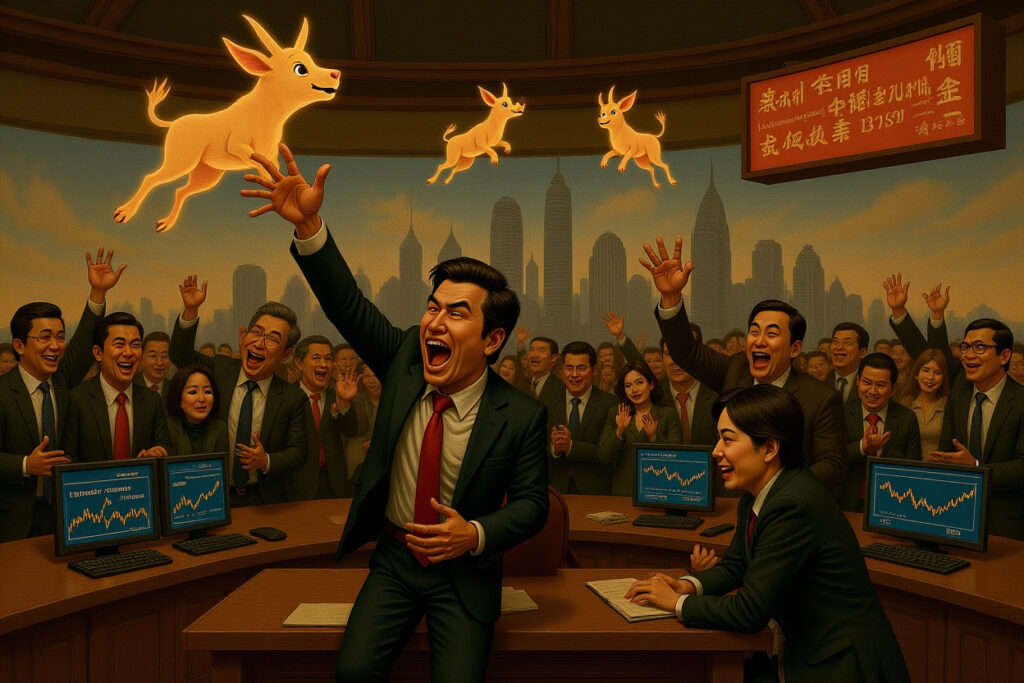Investors worldwide eagerly anticipate Federal Reserve rate cuts, often assuming they will automatically trigger stock market rallies. However, historical analysis reveals a more nuanced reality. Whether rate cuts translate into market gains depends crucially on one factor: whether the economy is heading toward recession or continuing to expand. Recent research from Barclays provides compelling evidence that unemployment trends serve as the most reliable predictor of post-rate-cut market performance.
The Historical Pattern: Rate Cuts and Market Performance
Barclays analyzed seven major instances over the past fifty years when the Federal Reserve resumed rate cuts after a significant pause. The results show a clear divergence in outcomes based on economic conditions. In four cases where rate cuts accompanied economic recessions (1974, 1981, 1990, and 2008), stock markets typically continued declining after the initial rate cut. Conversely, in three instances where the economy continued expanding (1995, 2002, and 2003), markets rallied steadily following rate reductions.
Non-Recession Scenarios: Consistent Market Gains
When rate cuts occurred without an accompanying recession, historical data shows impressive market performance. The MSCI World Index delivered average returns of 1% after one month, 2% after three months, 8% after six months, and 17% after twelve months. Stocks significantly outperformed bonds in these environments, with the S&P 500 delivering 16% returns over twelve months while 10-year Treasury yields remained largely flat.
Recession Scenarios: Initial Declines Followed by Recovery
During economic contractions, the pattern reversed dramatically. Markets initially declined by 2% after one month before showing minimal gains (0%) after six months. Although markets eventually recovered with 6% returns after twelve months, bonds significantly outperformed stocks during this period, with Treasury yields rising by 8 percentage points.
Unemployment Rate: The Decisive Indicator
The unemployment rate emerges as the critical variable distinguishing between these two scenarios. Barclays’ research demonstrates that unemployment trends provide the clearest signal about whether rate cuts will stimulate markets or merely respond to economic weakness.
Recession Pattern: Rising Unemployment
During economic contractions, unemployment typically continues rising for approximately one year after initial rate cuts, with cumulative increases of 2-3 percentage points. This pattern characterized the 1974, 1981, 1990, and 2008 episodes, where rate cuts failed to immediately stabilize either employment or markets.
Expansion Pattern: Temporary Hikes Then Declines
In economic soft landings, unemployment rates show only modest increases around the time of rate cuts before beginning to decline within several quarters. This pattern occurred in 1995, 2002, and 2003, creating ideal conditions for sustained market rallies following monetary easing.
Current Economic Context and Implications
The current U.S. unemployment rate has steadily climbed from historic lows to 4.3%, representing the primary factor driving expectations for Federal Reserve rate cuts. Barclays economists project that with significant labor market cooling, the Fed may reduce the federal funds rate from current levels to 3.0% by late 2026. Leading indicators suggest further softening in employment conditions. The ISM employment index and other forward-looking metrics indicate weakening job growth momentum, though the U.S. economic surprise index remains strongly positive, creating tension with rapidly declining rate expectations. Similar patterns appear in broader economic activity measures. The ISM manufacturing index typically begins improving approximately one quarter after rate cuts in non-recession environments but continues declining for multiple quarters before bottoming during economic contractions.
Yield Curve Dynamics and Sector Performance
The shape of the yield curve significantly influences how different market sectors respond to rate cuts, providing additional clues about economic direction and investment opportunities.
Curve Behavior Around Rate Cycles
The relationship between 10-year and 2-year Treasury yields typically shows bull steepening before rate cuts, particularly pronounced during recessionary periods. After cuts begin, the curve’s behavior diverges based on economic conditions. In non-recession environments, the curve moderately steepens for several months before flattening. During recessions, initial steepening gives way to bear flattening before eventually transitioning to bear steepening approximately six months later as recovery emerges.
Sector Implications and Current Conditions
Different yield curve environments favor different market sectors. Bull flattening conditions prove most favorable for overall market performance, with broad participation across sectors and slight outperformance by cyclicals. Cyclical sectors perform best during bear steepening periods while underperforming during bear flattening and bull steepening environments. The current decline in U.S. real interest rates primarily reflects falling actual rates rather than changing inflation expectations. Historically, real rate declines particularly benefit short-cycle sectors including capital goods, consumer durables, chemicals, construction materials, automobiles, mining, and transportation. Investors should monitor these sectors for potential opportunities as the rate cut cycle progresses.
Strategic Implications for Investors
Understanding the relationship between rate cuts, economic conditions, and market performance provides crucial insights for investment strategy. The evidence clearly indicates that investors should not automatically assume rate cuts will boost markets. Instead, they should closely monitor unemployment trends and yield curve dynamics to assess whether cuts represent proactive measures to extend expansions or reactive responses to economic weakness. In non-recession environments, history suggests maintaining or increasing equity exposure following initial rate cuts, particularly toward cyclical sectors that benefit from continued economic expansion. During recessionary periods, however, investors might consider increasing bond allocations or defensive equity positioning until unemployment trends stabilize. Current conditions suggest careful monitoring of employment data remains essential. While the rising unemployment rate has prompted rate cut expectations, investors should watch whether subsequent data indicates this trend is stabilizing (suggesting soft landing) or accelerating (suggesting recession). This distinction will likely determine market direction more than the rate cuts themselves. Historical patterns also remind investors that markets often anticipate economic developments. Equity markets typically rally before rate cuts in sustained expansions but show no consistent pattern before recessionary cuts. This suggests market performance before cuts may provide additional clues about underlying economic strength. For current market participants, the key lesson is clear: don’t just watch the Fed—watch the unemployment data. The trajectory of job creation and loss will likely determine whether coming rate cuts produce the market gains investors hope for or merely respond to economic challenges that continue to pressure corporate earnings and stock valuations. As always, successful investing requires looking beyond headline events to understand the underlying economic dynamics that ultimately drive market performance. Monitor employment reports, yield curve movements, and business activity surveys alongside Fed announcements to develop a comprehensive view of where markets might head next. Consider consulting with financial advisors to position portfolios appropriately for different economic scenarios that might unfold following anticipated policy changes.




